development
swift
reactjs
frontend
angular
programming
languages
webapplication
typescript
css
html
Top 9 Front-end Languages
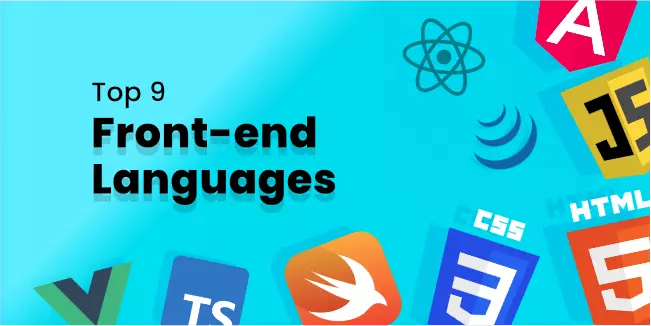
The front-end development of an application is crucial in determining how user-friendly it will be, whether for mobile or web applications.
There are several languages for front-end development, each with its benefits and drawbacks. This article presents a list of the best front-end programming languages. It looks at ten of the most popular languages used in web development from a technical viewpoint.
Since the language you choose impacts development and user experience directly, it is crucial to pick a suitable one. However, this cannot be easy. Especially if you are not exactly aware of the "Front end" term. Let us explain it briefly.
What is Front-end?
The front-end of a website, web page, or software program is the area through which users can interact with it. Users may access distinct areas and features of an app or browser.
The front end of any website or app contains code that allows users to see certain features. On the other hand, a backend requires data crunching and fundamental back-end operations to keep the application running.
If you are wondering about other differences between front-end and backend, surely you should check out our other article. We dive deeply into distinguishing key features between front-end and backend. Check it out, and you won't regret it.
Top 9 Front-end Programming Languages
So that you can now find out what a front-end is, what it is characterized by, and how it should be designed. But what to choose when there are many tools in the form of programming languages on the market? We will gladly answer this and other questions later in the text.
Here are the best front-end programming languages currently available:
Hypertext Markup Language (HTML)
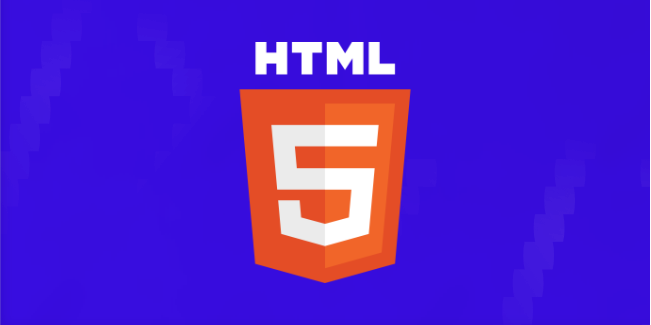
HTML, an acronym for Hypertext Markup Language, is a programming language for producing online documents known as pages. Every page has numerous connections to hyperlinks or links to additional sites.
HTML is a language that allows websites to be created. It's a programming language used to make websites and web apps. It's used by all web pages on the Internet, from beginning to end. Browsers need to understand how to render text and load other components.
Pros
- Easy to learn and use – Many developers find hyper-text markup language one of the easiest programming languages to learn. In fact, many are taught HTML before any other language. Furthermore, it is an integral part of development courses. HTML is easy to learn because it uses simple tags, and there is no issue with case sensitivity.
- Free – HTML is a completely free language that does not require any additional software to be installed. The language does not need customers to use any third-party plugins or applications for them to access essential features. It is why many organizations worldwide turn to HTML when it comes to website design. It's feasible to construct entire websites using only HTML codes.
- Supports multiple browsers – HTML is the most commonly used programming language, so you don't have to worry about your website being compatible with different browsers. HTML websites can also be optimized for different browsers.
Cons
- Sometimes is Too Simple – Basic HTML isn't enough for many of the features that today's websites provide to their users. Developers may find it challenging to include dynamic information on web pages in a hypertext markup language. To do so, they must learn additional languages such as JavaScript, PHP, or ASP.
- Limited – One notable downside to HTML is that it doesn't appealingly display content. Most developers already know this issue and rely on CSS or Cascading Style Sheets to make HTML page content more visually pleasing. In some cases, web designers and developers have maintained two different file sets.
Cascading Style Sheets (CSS)
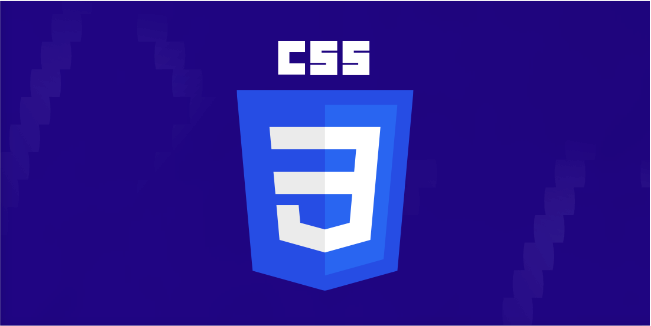
CSS (Cascading Style Sheets) is a programming language that establishes how documents are delivered to users in terms of layout and style. A text file structure based on a markup language such as HTML, XML, or SVG is a document.
CSS is used to transform a document into a consumable format for readers. This is especially crucial for browsers like Chrome, Firefox, and Edge, which are built to display documents on screens, printers, and projectors.
Pros
- Time-Saving − CSS code is only written once and can be used for several HTML pages. A style can be defined for each HTML element, which users can apply to multiple web pages as needed.
- Easy to Maintain − Users can edit the CSS code to modify the style. Users may easily make global modifications to modify the style. All web pages are subsequently updated as a result of any changes that were made.
- Changing Web Standards − The use of HTML attributes is rapidly being phased out, and as a result, CSS styles are becoming increasingly popular. It's best to utilize it in all HTML documents to assure compatibility with future browser versions.
Cons
- Cross-browser Issues – Although CSS changes may be easy for developers to execute, they need to take care to ensure full compatibility across all browsers afterward. This process is vital as user experience must not be hampered, and all browser types display the same content. CSS functions vary from browser to browser. Conducting this check is essential.
- Multiple Levels Lead to Confusion – CSS is a notoriously complicated language with various levels to consider. CSS, CSS 2, and CSS 3 are the three different language levels.
React

React is a programming language created by Facebook to create quick and innovative online user interfaces.
JavaScript libraries are constantly changing and adapting, but React is currently one of the most popular for web front-end development. It's also a great option to learn server-side features if you're interested in being a full-stack developer.
React is a programming language that helps developers create visual user interfaces and browser-based data rendering. React is one of the front-end development languages that makes it simple to learn and become an expert in the development process due to the technology's core features and advantages, which are listed below.
Pros
- Easy-to-learn Language - React is a simple programming language to learn and implement, owing to the abundance of documentation, online training tools, and tutorials. Developers with JavaScript experience may acquire a thorough knowledge of React in little time.
- Virtual DOM - The React programming language has one of the most significant advantages. Designers may optimize the structure to obtain optimum performance when an application is built around user interactions and frequent data upgrades.
Cons
- Rapid-Evolving Technology – ReactJS is a popular development tool that is always changing, which can be difficult for developers who have to take the time to learn new updates.
- Poor documentation – React is constantly being updated, making it difficult for some developers to keep up. If the latest documentation isn't available, updating oneself becomes an issue and causes problems down the line during development.
JavaScript
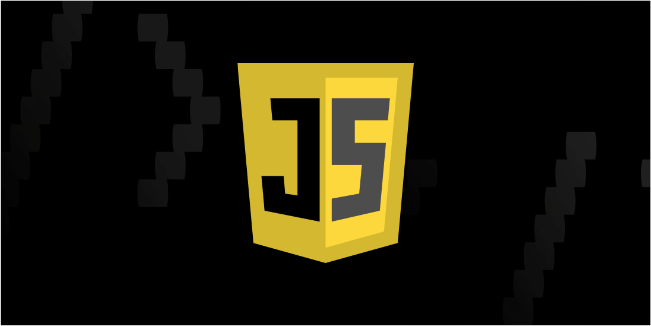
JavaScript is a popular front-end development language that enables users to add sophisticated web page features.
For example, Visual Basic builds upon the object-oriented programming concept. It's a good option for displaying dynamic content updates, two-dimensional and three-dimensional imagery, interactive maps, video boxes, and other informative elements when a website performs a dynamic operation. In these languages, an element can take on various forms, called polymorphism.
A user's web browser is a type of client that allows them to connect to the Internet. It is made feasible with suitable frontend development technology, in which a client transmits server data to a server, and the user sees it displayed.
A user's computer, browser, or client is used to access the Internet and visit websites. A client or browser is used to browse the Internet and interact with web pages. Users may start client interactions by filling out online forms. The software must validate the form fields to authenticate data supplied by a user.
Pros
- Server Load – JavaScript is a client-side language that may dynamically reduce server demands. On the other hand, some programs do not need a server to operate.
- Friendly User Interface – JavaScript may create functions like sliders' drag and drop capabilities. This user interface can improve the user experience on a website considerably.
- Extended Functionality – JavaScript developers may use third-party add-ons to create JavaScript snippets that extend the functionality of a web page.
Cons
- Client-side Security – Given JavaScript's propensity to execute on a user's computer, malicious activities are often a security concern for developers, who will disable JavaScript.
- Browser Support – Coding in JavaScript can be browser-specific, which means that some programmers have trouble making their code work across different browsers.
Angular
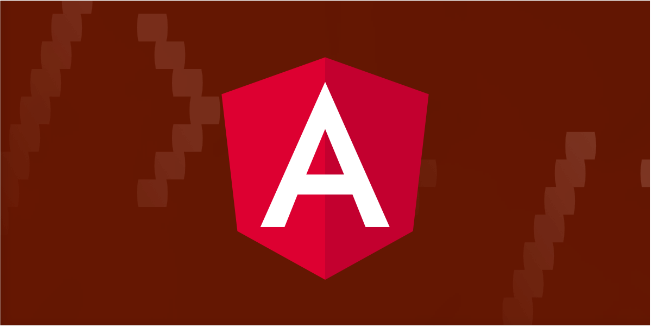
The Angular framework is open-source and free, making it ideal for those new to web development. Developers may use Angular to create animated menus for HTML web pages.
Angular Developers can create apps that provide similar user experiences by using cutting-edge platform features. With Angular, developers have access to a high-performance framework that is also simple. In addition, Angular provides command-line tools that help developers build and deploy apps faster.
Angular provides developers with many tools to get started with their development projects. Some of these include tools for routing issues and getting data from within an app.
Compared to React, Angular is a more comprehensive and responsive web design framework. It's simple for developers to build services, components, and modules using it. The development and testing environment is set up automatically aids in efficiency.
Pros
- Out-of-the-box Functionality – Angular offers a plethora of tools to developers as a foundation for their projects. Address routing with the provided tools or use them to fetch data within an app; the choice is yours. The best part is that Angular's environment comes pre-configured so that you can save time on development and testing.
- Consistency – When comparing Angular to React, it is clear that they are two distinct web development platforms. Developers will find it simpler to create services, components, and modules with Angular.
Cons
- Limited SEO – Because Angular has fewer SEO options, users sometimes face difficulty with accessibility for search engine crawlers.
- Can Be Too Complicated – While Angular is popular among developers, it can be complex and challenging to work with. Even recent versions of the software are difficult for some users.
Vue

Vue is a Javascript UI framework that differs from other monolithic frameworks in that it was created to provide maximum flexibility. Aside from being easily connected with other existing project libraries, the Vue core library is focused on the view layer and may be used quickly.
Vue.js, which is a JavaScript framework, is well-known for being user-friendly. Developers may use pure JavaScript, HTML, and Vue files to create their templates. Vue.js is an intuitive solution for developers who work with JavaScript platforms like Angular.js and React.js.
Vue.js is similar to Angular.js in many ways, but it is superior because it offers 2-way data binding. Any changes to the user interface will be reflected in the data and vice versa. Vue.js's templates are also designed using virtual nodes in JavaScript, pure JavaScript, and HTML files - giving developers more control over their design than ever before!
Pros
- Flexibility – Vue.js is a JavaScript-based framework that provides robustness and flexibility to users. Developers may use JavaScript, pure JavaScript, and HTML files to construct their templates. It makes Vue.js an easy-to-understand solution for developers who are using technologies like AngularJS and ReactJS.
- Two-way Communication – Vue.js supports two-way communications based on the MVVM architecture and makes HTML blocks simple to handle. It has a lot of parallels with Angular.js in this regard. Also known as 2-way data binding, it refers to the ability of a user interface modification made by a user to be immediately reflected in data, and any data modifications are also immediately shown in the UI.
- Great Tools - Vue.js is a popular framework for tooling, and the most recent Vue 3.x CLI is regarded as one of the greatest JavaScript Framework tools for JavaScript frameworks. Developers may jump into new projects by utilizing built-in capabilities such as Linting, Routing, CSS Pre-processors, State Store, Routing, PWA support, TypeScript integration, and unit testing.
Cons
- Language Difficulties – Vue.js, though it has excellent potential, is limited by its Chinese-language origins and reliance. Because the app exhibits a clear preference for Chinese over other languages, this creates difficulties for non-native speakers who want to use the framework. Consequently, developers may be disadvantaged when trying to work with Vue.js.
- Over Flexibility – While Vue.js' flexibility is fantastic, it also poses problems that many developers have to turn to the community for help. In some situations, the Vue.js codebase can be error-prone and unnecessarily complicated due to its flexibility.
JQuery

jQuery is a feature-rich yet objective JavaScript library. It's a feasible solution for event handling, HTML traversal, Ajax, document manipulation, and animations, among other things. The API of jQuery is also quite user-friendly, and it works well in a variety of browsers. The flexibility and breadth of capabilities of this front-end programming language are well-known.
It has allowed many developers to take advantage of JavaScript programming. jQuery allows developers to improve JavaScript without having to learn new syntax. With jQuery, you can write easy, legible, and reusable code. The language eliminates the need for sophisticated and repetitive loops and DOM library calls.
Pros
- Simple - By using jQuery, developers can improve their JavaScript skills without learning new syntax.
- Clear Code - jQuery makes writing code simpler, more readable, and reusable.
- Reduced Loops - The language decreases the amount of complex and repetitive loops and DOM library calls that need to be written.
Cons
- Limited Functionality – Although jQuery has a large library, its functionality remains limited. It becomes an issue when developers require more customization and have to depend on JavaScript instead.
- JQuery Javascript is Needed – Although the jQuery JavaScript file is tiny, it's a potential issue for both client computers and web servers when hosting jQuery scripts on the server.
TypeScript
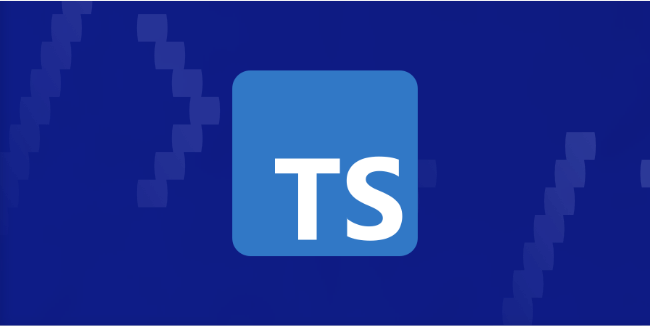
TypeScript is a syntactical superset of JavaScript and one of the most popular front-end programming languages. TypeScript includes any JavaScript code, and it works in all browsers.
TypeScript is a language that can be used in JavaScript projects and acts as a translation layer. Even though it shares many similarities with JavaScript, TypeScript is its language. It makes use of some components derived from JavaScript.
Developers must know how JavaScript works to make good use of TypeScript. It is since, before being run, TypeScript code is translated into JavaScript. Although TypeScript isn't as well-known as C++, it can be thought of similarlyJavaScript++.
One of the best things about TypeScript is that it catches potential type problems in JavaScript code during development. Also, because TypeScript builds off JavaScript, it simplifies creating object-oriented code.
Pros
- Strict – TypeScript's defining characteristic is that once an element is defined, it remains set. This stability is highly advantageous.
- Structural – Users who want to define commonly used structures will find structural typing essential fully. TypeScript makes it easier for developers to trust designated structures.
- Type annotations – By using TypeScript type annotations, you can declare the intended type before you use the value.
Cons
- Demanding - TypeScript generally necessitates extra work to code
- Low Support - Unfortunately, TypeScript does not offer much support for theory-based classes.
- Lack of Necessary Documents - TypeScript needs a definition document to use an external library. Unfortunately, this document isn't always available.
Swift

Swift is a front-end development technology created by Apple in 2014. It can be used to create iOS, tvOS, macOS, and watchOS applications making it great for developing iOS mobile apps.
Although Swift operates with some of the concepts of Objective-C, such as expandable programming, it is considered a more modern and updated version. The contrast lies in static typing and protocol design.
Pros
- Open-source – Swift is an open-source development language that provides functionality for anyone who wants to use it. It has a large community of users who offer support and third-party tools for new developers.
- Safe and Trustworthy – The syntax of Swift makes it possible for users to write consistent, error-free code, which is why it is so popular among developers. Swift has several safety precautions to help prevent errors and enhance readability.
Cons
- No Backward Compatibility – Some projects might encounter difficulties because Swift does not support older versions of iOS applications.
- Niche – Swift is gaining a lot of users quickly, but it isn't yet well-liked because there aren't that many coders using the language. It may alter as more developers start using the language, though.
Conclusion
A good website that appeals to clients and keeps their attention should include all of the following features: A successful firm requires an effective, clean, and attractive website to appeal to customers and keep their attention. The development of a website's front-end is necessitated by this approach.
The wrong sort of development looks unsightly and drives away potential consumers.
Having an aesthetically pleasing and user-friendly website is pivotal for any business that wants to stay afloat in today's digital age.
The proper language might assist you in achieving excellent development results while also providing high-quality user experiences. Are you still not sure what to use?
Contact Us!